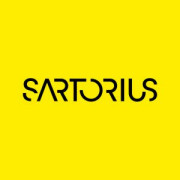New Sartorius QbD tool supports faster Raman model building

ambr 15 cell culture system with ambr analysis module showing BioPAT Spectro port, to which a probe for Raman spectrometer is connected.
Unlocking the potential of Raman spectroscopy as a high throughput analytical technique for monitoring cell culture in mini bioreactors.
Sartorius has introduced BioPAT Spectro, a Quality by Design (QbD) tool for use with its ambr automated micro and mini bioreactor systems and with the single-use production bioreactors BIOSTAT STR. The new tool offers access to Raman spectroscopy analysis in high throughput process development, supporting faster Raman model building and accelerating scale-up into commercial manufacturing.
Raman spectroscopy is non-invasive and can measure multiple analytes, making it suitable as a Process Analytical Technologies (PAT) method for process control and monitoring of cell cultures. Off-line approaches to obtain and consolidate enough data to produce a robust Raman model can be time‐consuming and costly. The new BioPAT Spectro Tool, can be retrofitted into ambr 15 cell culture and ambr 250 high throughput systems, and enables quick and simple sampling for integrated at-line analysis of a large number of analytes by Raman spectroscopy in a Design of Experiments (DoE) approach.
Consisting of a multi-use flow cell integrated into the ambr analysis module, BioPAT Spectro in ambr has been successfully demonstrated by major pharmaceutical companies and is compatible with Raman spectrometers from Kaiser Optical Systems and Tornado Spectral Systems. The online Raman spectroscopy data alongside data from the ambr process and selected integrated analysers, is automatically collated by the ambr software and can be easily transferred to SIMCA Multivariate Data Analysis (MVDA) software to build robust Raman models.
One benefit of using BioPAT Spectro with ambr system is that all integrated sampling, sample analysis, data collection, and consolidation is automated, making walk-away Raman spectroscopy analysis in high throughput process development a reality. In addition, one ambr run in 24 mini bioreactors can cover a wide design space, rapidly providing all the data required to build robust Raman models to support QbD, in less than half the time of the conventional benchtop approach.
Developed with scalability in mind, BioPAT Spectro’s flow cell’s Raman probe interface and optical path design is identical across scales so it enables time-saving, automated in-line Raman spectroscopy with Sartorius’ BIOSTAT STR single-use bioreactors. The integrated qualified and ready-to-use single-use spectroscopy port in Flexsafe STR bags for BIOSTAT STR bioreactors will be launched in the near future.
"Unlocking the potential of Raman spectroscopy as a high throughput analytical technique for monitoring cell culture in mini bioreactors has been a key goal of process development scientists for a number of years,” commented Dr Svea Cheeseman, Product Manager Process Analytical Technology at Sartorius. “We are showcasing the BioPAT Spectro at IFPAC and BPI West this year and look forward to discussing with scientists how they can use this new analytical technique with ambr systems to build and utilize robust Raman models, in a workflow which will support their QbD programs, while minimizing resource costs and biologics’ manufacturing timelines,” adds Dr Cheeseman.

Related News
-
News WuXi to sell CGT manufacturing unit to US-based Altaris LLC
At the tail end of 2024, Chinese-based CDMO WuXi AppTec announced the signing of their deal with private equity firm Altaris LLC, confirming the sale of WuXi Advanced Therapies, the cell and gene therapy manufacturing arm of WuXi AppTec. -
News Women in Pharma: Our hopes for 2025 and beyond
Our last instalment for 2024 of the Women in Pharma series brings you messages direct from the Informa Markets CPHI team as they discuss the advice and insights they have carried throughout their roles working at CPHI, and what they hope to see for the... -
News CPHI Milan Wrap-Up Report: Conference Highlights
Discover the emerging and trending topics of the pharmaceutical industry with our CPHI Milan Conference Highlights, with exclusive insight from pharmaceutical leaders and experts! -
News BIOSECURE Act not included in key defense spending bill for 2025
On December 7, 2024, the Biden administration revealed the 2025 National Defense Authorization Act, an annual defense bill specifying the budget and expenditures of the US Department of Defense. The controversial BIOSECURE Act was notably missing from ... -
News Lessons from CPHI Milan 2024: Sunny Intervals for Pharma Manufacturing?
As the 2024 CPHI conference wrapped up in Milan, we caught up with L.E.K. Consulting – a global strategy consulting firm with deep expertise in pharma manufacturing – to discuss evolving market perspectives and business outlook. -
News Trump 2.0: What does the US election result mean for the healthcare industry?
After Trump won the Presidential election in the US in early November, we take a look at some of the implications a new Trump administration could have on the health and pharmaceutical industry, and on US patients. -
News Women in Pharma: Reflections from Behind the Scenes
In this instalment of our monthly series, the team that brings you the Women in Pharma series each month sits down for a heart-to-heart on what the series means to them, and how they hope to continue their work in the future. -
News Scaling the Industry: CPHI Scale-Up Market interview with YSK Laboratories
For the first time, CPHI Milan hosted the CPHI Start-Up Market, expanding support for emerging and small-sized enterprises in their transition to the next level of growth. In this interview, we spoke with Yuvansh Khokhani, Managing Director of YSK Labo...
Position your company at the heart of the global Pharma industry with a CPHI Online membership
-
Your products and solutions visible to thousands of visitors within the largest Pharma marketplace
-
Generate high-quality, engaged leads for your business, all year round
-
Promote your business as the industry’s thought-leader by hosting your reports, brochures and videos within your profile
-
Your company’s profile boosted at all participating CPHI events
-
An easy-to-use platform with a detailed dashboard showing your leads and performance

.png)





